Water heaters come equipped with a temperature and pressure relief valve, also known as a TPRV. This valve allows water or steam to escape from the water heater if the temperature or pressure gets too high. This prevents a water heater from exploding or turning into a missile.
When a TPRV at a water heater leaks, it’s usually a simple fix; just replace the valve. These valves cost less than $15 and replacing the valve is a basic job. There are plenty of videos on YouTube showing how to do this, and the whole project probably won’t take more than fifteen minutes.
Unless it starts leaking again.
If you replace a TPRV and it starts leaking again, it probably means the valve is doing its job; it’s relieving excess pressure. When this happens, the fix gets a little bit more involved, and some troubleshooting is in order.
Verify the proper valve is installed
The TPRV on a water heater is set to discharge at 150 PSI or 210° Fahrenheit. These numbers will be printed right on the valve, or on a tag attached to the valve. See below.
If a pressure relief valve for a boiler is accidentally installed on a water heater, it will leak like crazy from the start. These valves may look identical, but they’re set to go off at 30 psi, not 150 psi.
If a new TPRV is properly installed and it still leaks, you probably have a pressure problem.
Excessive pressure
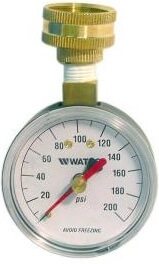 If the pressure in a plumbing system ever exceeds 150 PSI, the TPRV will leak. Getting to the bottom of this issue should be quite simple and straightforward. Buy a pressure gauge with an extra indicator to show surges, and connect it to the plumbing system. It doesn’t matter if it’s connected to a hot or cold water pipe, because both will be at the same pressure.
If the pressure in a plumbing system ever exceeds 150 PSI, the TPRV will leak. Getting to the bottom of this issue should be quite simple and straightforward. Buy a pressure gauge with an extra indicator to show surges, and connect it to the plumbing system. It doesn’t matter if it’s connected to a hot or cold water pipe, because both will be at the same pressure.
The easiest way to do this is to get a gauge with a garden hose thread, connect it to an outside garden hose faucet, and open up the faucet. If that’s not an option, you can also use the hot or cold spigot for a washing machine. You should expect the pressure to be somewhere in the 40 – 80 PSI range with no other water running. If the pressure is over 80 PSI, it should be corrected. That’s too high for your system. The solution is to have a pressure regulator installed. Get a plumber to do that, as they’ll need to install an expansion tank at the same time. I’ll come back to those in a minute.
Acceptable pressure
If the pressure is within the acceptable range, you probably have an intermittent problem with excessive pressure that can be easily re-created. Go run a bunch of hot water at your plumbing fixtures until you’ve exhausted the hot water supply on your water heater, and keep running the water for another few minutes. If you have several fixtures open, this should only take about ten to fifteen minutes. Now stop running water at all of your fixtures and wait.
You’ve just replaced the hot water in your water heater with cold water, which will cause your water heater to run for a while. This will cause the water to expand significantly until the water heater thermostat is satisfied. That might take about an hour or two. In most situations, this water will expand back out through the cold water inlet, all the way back to the water supply coming into the house. The municipal water supply for the house acts as a gigantic expansion tank… and nobody notices. This is illustrated in the diagram below.
Your pressure gauge shouldn’t change a bit while this happens. If the pressure increases with this test, however, you’ve made an important discovery. You have a closed system!
A closed system
A closed system exists when water can’t leave your house. One way for this to happen is to have a check valve installed on the water supply coming into the home. I don’t see a lot of these in Minnesota, but I do see them periodically.
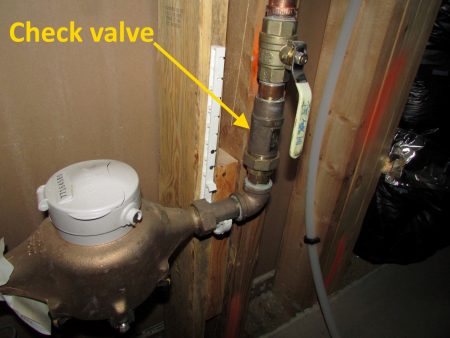
The other way to create a closed system is to have a pressure regulator installed that contains a built-in check valve. With either of these installed, water can’t leave the house. When water expands and can’t go anywhere, pressure in the system increases. Watch your pressure gauge to verify this. Once the pressure gets to 150 PSI, the TPRV should do its job and leak.
The fix for a closed system
When a closed system exists on the water distribution piping in a home, an expansion tank needs to be installed somewhere on the plumbing system. This is a simple and straightforward fix; an expansion tank will give the water somewhere to go when it expands, and the TPRV on the water heater will stop causing problems.
Expansion tanks are required when a closed system exists, both by water heater manufacturers and by plumbing codes. The Minnesota State Plumbing Code requires an expansion tank when a pressure regulator is installed (608.2):
An approved expansion tank shall be installed in the cold water distribution piping downstream of each such regulator to prevent excessive pressure from developing due to thermal expansion and to maintain the pressure setting of the regulator.
Additionally, Section 608.3 requires an expansion tank when a check valve or backflow preventer is installed on the water supply line:
A water system provided with a check valve, backflow preventer, or other normally closed device that prevents dissipation of building pressure back into the water main shall be provided with an approved, listed, and adequately sized expansion tank or other approved device having a similar function to control thermal expansion.
If an expansion tank is already installed and there is still a problem with excessive pressure, you have a problem with the expansion tank. I’ll talk about expansion tanks in next week’s blog post.

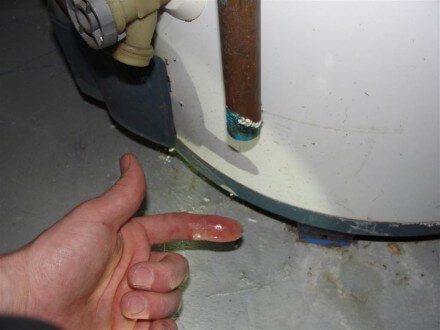
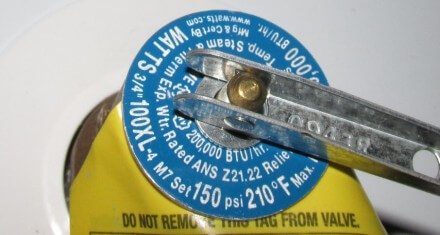
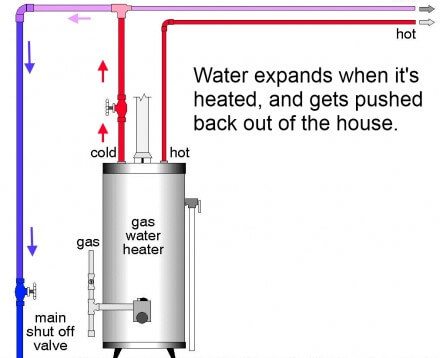
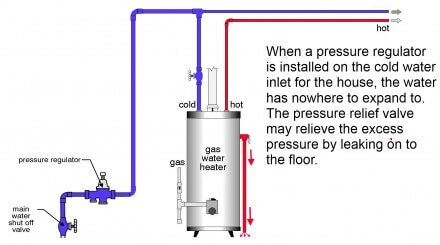
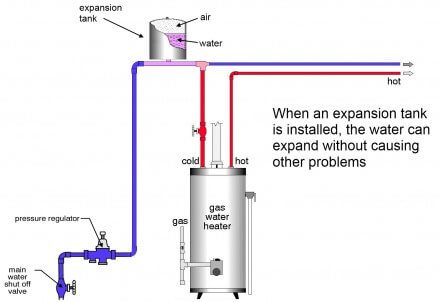

Ross
April 16, 2020, 12:44 pm
Great post!
Just curious as this caused me to look at my setup and notice I have the PRV with no expansion tank (mid-90’s house).
How often do you see an installation with a PRV and no expansion tank?
Is that a recent code change?
Reuben Saltzman
April 16, 2020, 12:57 pm
Hi Ross,
The vast majority of them there in Minnesota don’t have expansion tanks. You only need that if you have a closed system.
Ross
April 20, 2020, 7:14 am
Oh, maybe I’m misunderstanding this line, but I thought a pressure reducing valve was pretty common, so most houses should have an expansion tank? Or are you saying its a code requirement because of the possibility of a closed system, but most cases wouldn’t require it for correct operation since its not actually a closed system?
“The Minnesota State Plumbing Code requires an expansion tank when a pressure regulator is installed (608.2):”
Reuben Saltzman
April 20, 2020, 9:22 am
Hi Ross,
Most homes in Minnesota also don’t have pressure-reducing valves.
Ross
April 21, 2020, 5:57 am
Ah, good to know. Thanks for the additional detail and quick responses Reuben!
David M. Muro
May 17, 2020, 7:58 am
Firstly, thanks for sharing this great information. I learned some tips about this blog. It is a big help to me. 3 years ago, I bought a house and two days ago a leaking shower valve my master bathroom. So, I want to replace it.
Joseph Clark
June 6, 2020, 7:52 pm
I have a problem. I have a pressure reducer valve connected to my cold water. I have a brand new hot water tank and as soon as I open the water to fill the take it fills and the water just constantly drains out of the pressure relief valve on the hot water tank. I can not figure out how to stop it.
Reuben Saltzman
June 7, 2020, 5:22 am
I can think of 4 possibilities:
1: The T&P relief valve is open. Close the valve.
2. The T&P relief valve is defective. Replace it.
3. You don’t have a T&P valve, you have a pressure relief valve for a boiler that’s set to discharge at 30 psi.
4. The pressure in your home is too high.